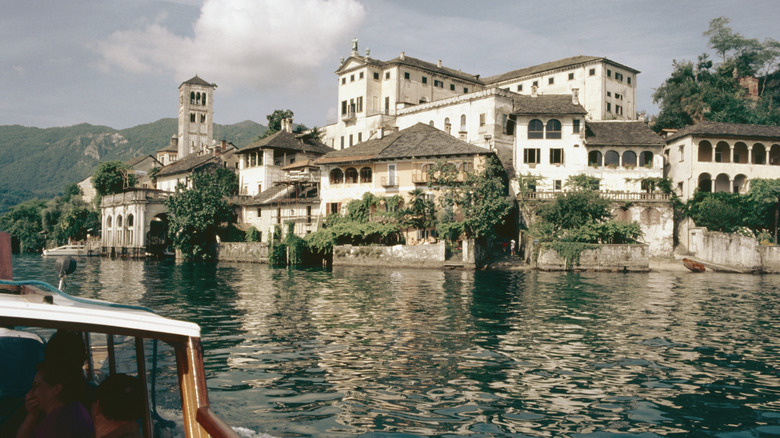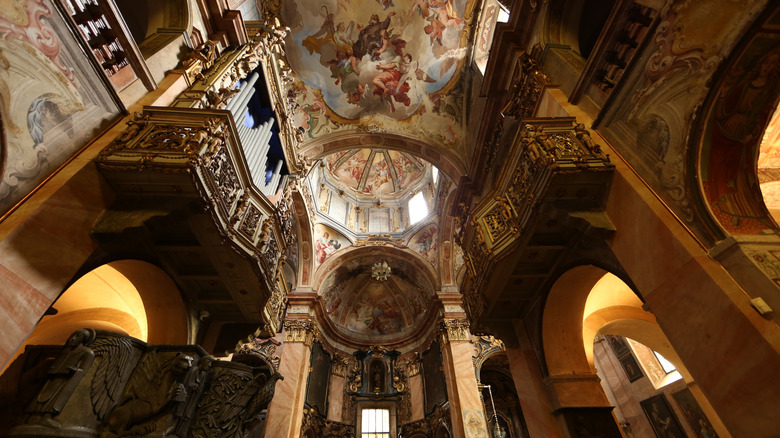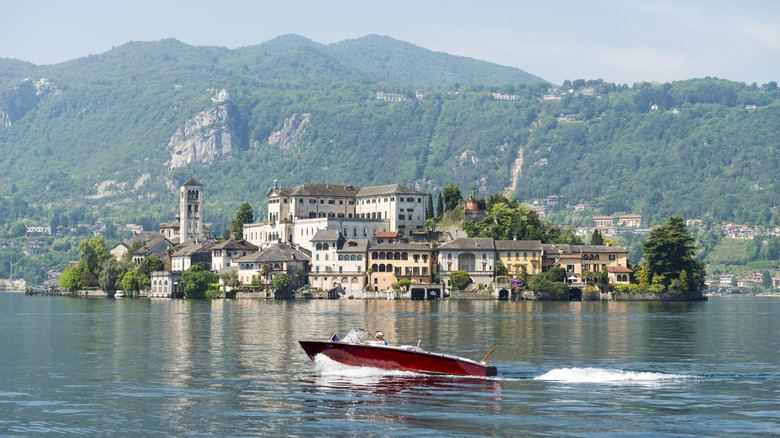From the romantic villas along the edge of Lake Como to the dramatic mountains rising behind Lake Garda, there are an endless number of extraordinary landmarks to see in Italy. Few travelers, however, have ventured to the mesmerizing shores of Lake Orta, where crowds are scarce. Even fewer have heard of the Isola San Giulio. A small stretch of rock on Lake Orta’s calm waters, it’s one of Italy’s most beautiful yet lesser-known islands. Crisscrossed by narrow alleys between medieval villas and ancient chapels, the Romanesque bell tower of the Basilica di San Giulio dominates the landscape. And if that doesn’t compel you to visit, the island has a mythical origin story to rival that of Romulus and Remus founding Rome.
As the legend goes, long ago the Isola San Giulio was once just a rugged outcrop plagued by snakes, dragons, and other reptilian monsters. Around the late 4th century, a Greek-born Italian priest called Saint Julius (or Giulio), arrived on the island wielding his staff and banished the hideous creatures, intending to transform the island into a haven of gospel worship. However, one of the dragons escaped Saint Julius’ purge and fled to a nearby cave, where its skeleton was later found. Today, the fossilized vertebra displayed in the Basilica di San Giulio is said to belong to that very same dragon. Saint Julius himself is also buried in his namesake basilica, bringing the tale to a worthy conclusion.
Many of the townhouses and religious buildings on the Isola San Giulio are over 1,000 years old, and the moment you set foot here you can feel the atmosphere of mystery and serenity permeating the quiet alleyways. As it’s just over an hour’s drive from Milan, this mystical island is the perfect peaceful escape from hectic crowds.
What to do on the Isola San Giulio and nearby attractions
As the burial place of the island’s founder, the Basilica di San Giulio is of course a must-see on your visit there. Much of the present building dates to the 11th century, when a Romanesque nave was constructed atop Saint Julius’ original chapel. Aside from the legendary dragon bones, the basilica is covered in stunning frescoes painted during the 15th century, depicting stories and miracles from the life of Saint Julius, along with other religious iconography. Stairs leading down into the crypt will take you to a casket where the remains of Saint Julius are displayed.
The Isola San Giulio is also known as the “Island of Silence,” and that’s because of the narrow walkway circling the island’s perimeter called the “Route of Silence and Meditation.” Flanked by the medieval façades of the island’s buildings, the walkway is dotted with signs proclaiming helpful adages on spiritual reflection and is a great place for a contemplative stroll. Since silence is emphasized, put your phone on mute if you can so as not to disturb other visitors enjoying their walk.
Just across the water from the island is the picturesque village of Orta San Giulio — since you’ll have to stop here first to reach the Isola San Giulio, take some time to explore the winding cobbled streets and romantic architecture. Boats to the island leave at regular intervals from Orta San Giulio’s main square, the Piazza Motta, and just uphill from there is the Church of Santa Maria Assunta, whose rather minimalist exterior hides the beautifully intricate religious frescoes within. A path from the church leads to the Sacro Monte, a hilltop network of chapels and gardens with a panoramic view of the village and the Isola San Giulio below.




